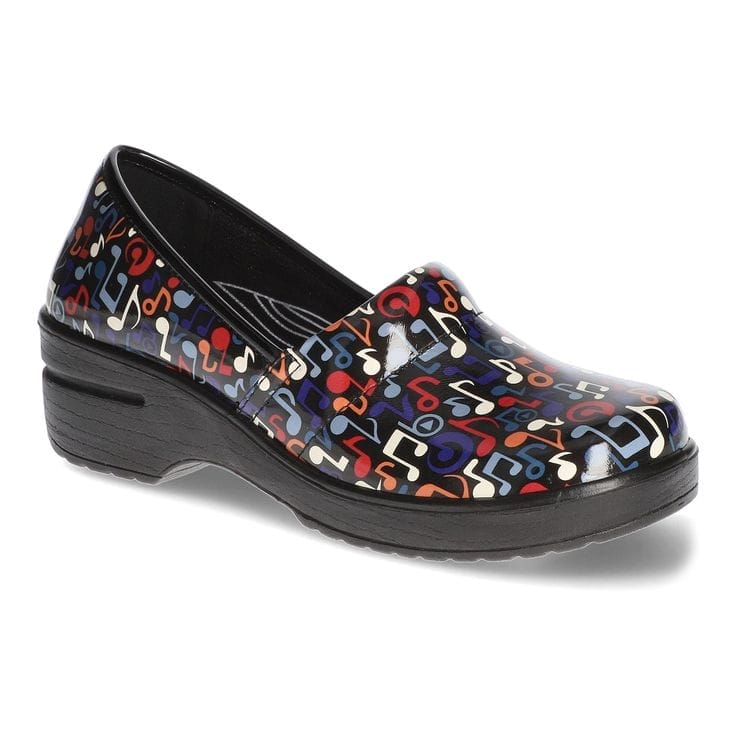Navigating women’s shoe sizes can be confusing, especially when shopping internationally or online, where sizes often vary. Understanding different sizing systems helps you find the right fit, but this can be challenging due to inconsistent measurements. Using a conversion chart makes the process easier and ensures a better fit for your shoes.
Women’s Shoe Conversion
| US | UK | EU | Foot Length (inches) | Foot Length (cm) |
|---|---|---|---|---|
| 4 | 2 | 35 | 8.2 | 20.8 |
| 4.5 | 2.5 | 35 | 8.3 | 21.6 |
| 5 | 3 | 35, 36 | 8.5 | 22 |
| 5.5 | 3.5 | 36 | 8.8 | 22.4 |
| 6 | 4 | 36, 37 | 8.9 | 22.9 |
| 6.5 | 4.5 | 37 | 9.1 | 23.3 |
| 7 | 5 | 37, 38 | 9.3 | 23.7 |
| 7.5 | 5.5 | 38 | 9.4 | 24.1 |
| 8 | 6 | 38, 39 | 9.5 | 24.6 |
| 8.5 | 6.5 | 39 | 9.7 | 25 |
| 9 | 7 | 39, 40 | 9.9 | 25.4 |
| 9.5 | 7.5 | 40 | 10 | 25.8 |
| 10 | 8 | 40, 41 | 10.2 | 26.2 |
| 10.5 | 8.5 | 41 | 10.3 | 26.7 |
| 11 | 9 | 41, 42 | 10.5 | 27.1 |
| 11.5 | 9.5 | 42 | 10.7 | 27.5 |
| 12 | 10 | 42, 43 | 10.9 | 27.9 |
Understanding Shoe Size Conversion
Shoe size conversion is essential for finding the right fit when dealing with different sizing systems used around the world. Without understanding these conversions, you might end up with shoes that don’t fit properly.
For instance, US sizes differ from UK and EU sizes, and using centimeters adds another layer of complexity. Each system has its own standards and measurements, making accurate conversion crucial.
Transitioning between these systems requires balancing foot length and width to ensure comfort. Therefore, knowing how to convert sizes effectively can prevent fit issues and enhance your overall shopping experience.

Common Conversion Mistakes to Avoid
Avoiding common conversion mistakes can save you from the frustration of ill-fitting shoes and ensure a smoother shopping experience. One frequent error is relying solely on size charts without considering foot width, which varies between brands. Another mistake is not measuring your feet correctly, leading to inaccurate conversions.
To avoid these issues, always check the specific size guide for the brand you’re purchasing from and consider using a foot measuring tool. Additionally, when shopping online, read customer reviews for insights on fit and sizing. Balancing these factors can significantly impact your satisfaction with your new shoes, making careful conversion a key step in ensuring a good fit.
Practical Tips for Finding Your Size
Knowing your correct shoe size in different systems can significantly enhance your shopping experience and help you find the perfect pair of shoes. First, measure your feet at home using a simple ruler and a piece of paper.
This allows you to accurately determine your foot length and width. Next, use online tools and size guides provided by retailers to convert these measurements into different sizing systems. Balancing these methods ensures a more precise fit.
However, keep in mind that shoe sizes can vary by brand and style, so always check each brand’s specific size chart. By considering these factors, you improve your chances of finding shoes that fit comfortably and avoid the inconvenience of returns.
FAQ
1. What if my foot size falls between two sizes on the conversion chart?
Answer: If your foot size falls between two sizes on the conversion chart, it’s best to choose the larger size for a more comfortable fit. This helps accommodate variations in shoe fit and provides extra room, especially if you plan to wear thicker socks or if the shoe brand runs small. Additionally, consider checking customer reviews for insights on the shoe’s fit and sizing.
2. How often should I measure my feet to ensure accurate sizing?
Answer: You should measure your feet every six months or whenever you notice a change in how your shoes fit. Foot size can change due to various factors such as age, weight fluctuations, or pregnancy. Regular measurements help ensure that you’re using the most accurate size for your feet, reducing the risk of ill-fitting shoes.
3. Are there any specific tips for converting sizes when shopping for international brands?
Answer: When shopping for international brands, always refer to the brand’s specific size guide, as sizing can vary between countries and manufacturers. Use a reputable conversion chart as a starting point, but cross-check it with the brand’s own measurements. Additionally, consider reading customer reviews and checking return policies to ensure you can exchange or return the shoes if they don’t fit as expected.